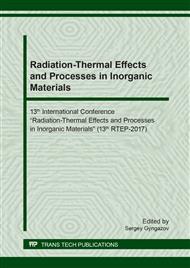p.165
p.170
p.176
p.185
p.190
p.195
p.200
p.206
p.211
The Study and Exposure of Laws of Distribution Protein Substances in Uroliths
Abstract:
The characterization of urinary stones mineral and organic composition in Omsk region and Saint-Petersburg (Russia) was studied. It was established that nature and amount of amino acids and trace elements in composition of phosphate, oxalate and urate urinary stones are different. For studying processes of formation of the main mineral phase of urinary stones on the model systems powders of calcium oxalate monohydrate and hydroxyapatite with molar Ca/P ration 1.57 –1.67 were synthesized. The determination of electro kinetic properties and particle size of synthesized powders were made. The effects of amino acids (glutamic acid, glycine and lysine) on the process of formation of calcium oxalate monohydrate and hydroxyapatite were investigated. It was shown that amino acids inhibited growth and aggregation of calcium oxalate monohydrate and hydroxyapatite particles and preferential adsorb on to their crystal surface.
Info:
Periodical:
Pages:
211-216
Citation:
Online since:
September 2018
Authors:
Keywords:
Price:
Сopyright:
© 2018 Trans Tech Publications Ltd. All Rights Reserved
Share:
Citation:


